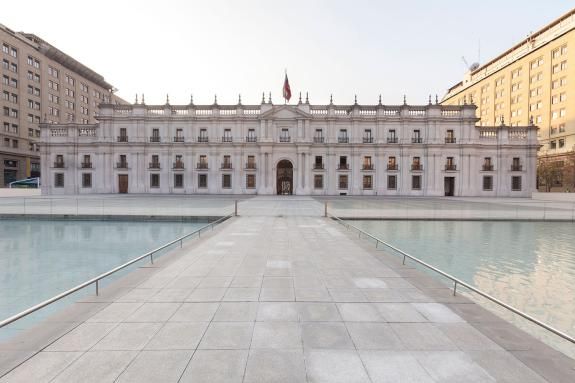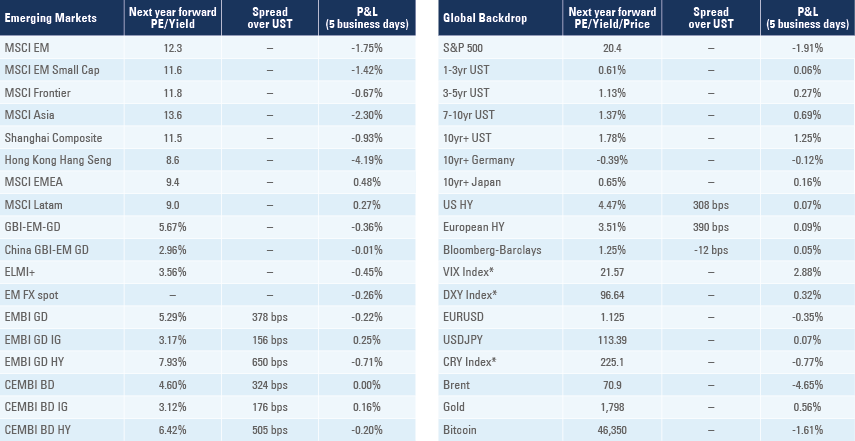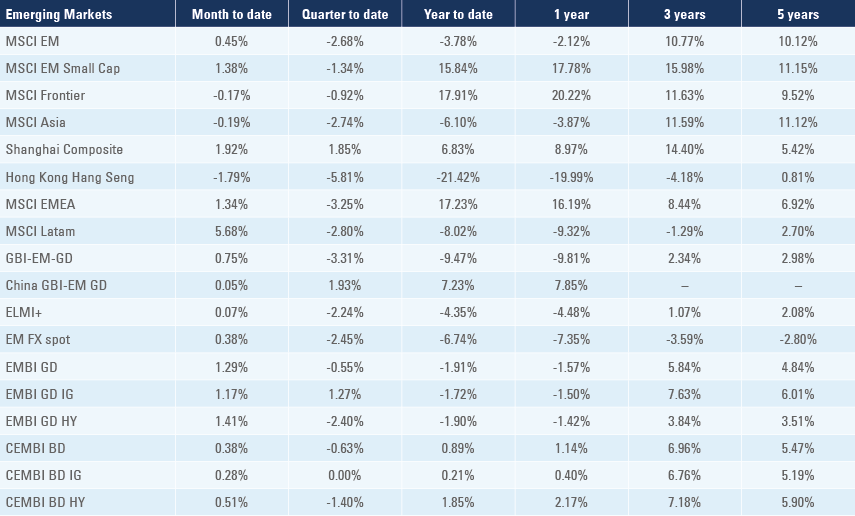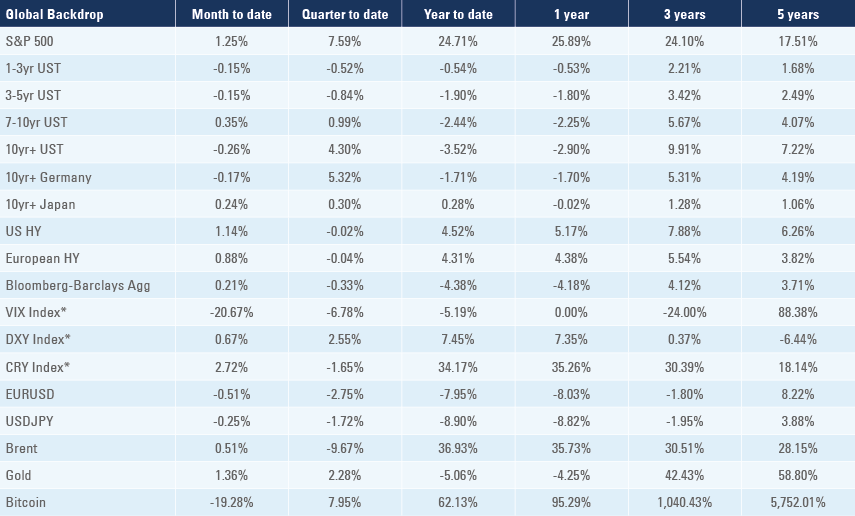
China and Turkey eased policy rates, the first minimally, the latter repeating policy mistakes, while Chile, Colombia, Mexico, Hungary and Pakistan hiked policy rates. The centre-left candidate Gabriel Boric was elected as President in Chile. Russia presented its case for a new security settlement in previous Soviet Union states. The TRY free-fall accelerated after a 50% increase in minimum wage leads to fears over indexation and hyperinflation.

Emerging Markets
China: The People’s Bank of China (PBoC) cut its 1-year loan prime rate (LPR) by 5bps to 3.8%, but kept the 5-yr LPR unchanged at 4.65%, a small policy adjustment that contains more signal than effect. The PBoC is probably wary of lowering lending rates too close to the one-year deposit rate (at 1.5% since 2015) and risk squeezing banks’ net interest margin. The PBoC has accelerated the purchase of FX reserves to USD 5.6bn in November from USD 1.7bn in October. Purchasing USD will both inject more liquidity in the system and prevent the continuous appreciation of the RMB. Last week economic activity was softer than expected overall in November as the yoy rate of retail sales dropped 1.0% to 3.9%, industrial production rose 0.3% to 3.5% yoy, fixed asset investment was down 0.9% to 5.2% yoy and property investment declined 1.2% to 6.0% yoy. In other news, the US announced it would blacklist Chinese biotechnology firms, another policy aimed at reducing capital available to a sector of strategic importance to China, with more advanced technologies than in the US.
Chile: Gabriel Boric won the presidential election run-off with 56% of valid votes, amidst a high turnout. Boric is the youngest president-elect in Chilean history (35-years old). His political career started during the university protests of 2011 to 2013 – he was instrumental in the negotiation process leading to the formation of the Constitutional Assembly, which will draft a new constitution over the next two-years. Boric’s economic policies are centre-left, rather than radical, with the most contentious policy being a proposal to end the current pension fund system. Like President Castillo in Peru, Boric is likely to face significant governance issues if he attempts to implement extremist policies as the Chilean Congress is split between right- and left-wing parties while extreme left parties account for only c. 5% of the seats in both houses. The Central Bank of Chile (BCCh) hiked its policy rate by 125bps to 4.0%, in line with consensus. Core CPI inflation remains broadly within the 3.0% central bank target, but expectations moved above it.
Hungary: The National Bank of Hungary (NBH) hiked its benchmark rate by 30bps to 2.4%, followed by a later hike in the effective policy rate (the 1-week deposit rate) by 0.3% to 3.6% - thereby notching up 180bps of hikes since October. The NBH ended its quantitative easing programme as Deputy Governor Barnabas Virag said the tightening campaign would extend into 2022.
Russia: The Central Bank of Russia hiked its policy rate by 100bps to 8.5% as Governor Elvira Nabiullina signaled the end of the hiking cycle is near, despite the fact the committee still sees inflation risks tilted to the upside. In geopolitical news, Russia proposed two treaties to the US and the North Atlantic Treaty Organisation (NATO). The US should deny NATO membership to all ex-Soviet states and that European forces return to the geographic positions they held in 1997. The initial reaction from the US was to dismiss some of Russia's demands as "unacceptable" and stated it was “unhelpful” to conduct the negotiations in public. In other geopolitical news, European gas prices dropped 11% from their peak after Russia increased supplies to the region. The new German Chancellor Olaf Scholz said the West should seek a way out of a spiral of tension with Russia, saying “we are willing to engage in constructive dialogue”.
Turkey: The Central Bank of Turkey (CBT) cut its policy rate by 100bps to 14.0%, in line with consensus, but signalled the end of the easing cycle. Despite the marginally hawkish surprise, the TRY sold off aggressively again after President Recep Erdogan announced a 50% increase in the minimum wage, leading to fears of indexation. In economic news, the current account surplus improved to USD 3.2bn in October from USD 1.7bn in September while industrial production rose 0.6% mom in October from -1.5% mom in September.
Snippets
Argentina: CPI inflation dropped to 2.5% mom in November (3.3% consensus) from 3.5% in October, resulting in a 0.9% decline in yoy rate to 51.2%. Real GDP rebounded 4.1% qoq in Q3 2021 from -1.4% qoq in Q3 2021.
Brazil: Economic activity dropped a further 0.4% mom in October, in line with consensus, from -0.5% in September. Datafolha’s latest opinion poll canvassing voting intentions for the October 2022 presidential election showed former President Luis Inacio Lula da Silva on 48%, President Jair Bolsonaro on 22%, and former judge Sergio Moro trailing with 9%
Colombia: The central bank hiked its policy rate by 50bps to 3.0%, in line with consensus. The yoy rate of manufacturing production softened 5.4% to 10.1% and retail sales declined 1.1% to 14.2% yoy, but remained at elevated levels.
Czech Republic: PPI inflation dropped to 1.2% mom in November from 1.9% in October, leading to a 1.9% increase in the yoy rate to 13.5%. The current account deficit narrowed to CZK 3.7bn in October from CZK 12.0bn in September, significantly below the CZK 16.8bn consensus.
Egypt: The central bank kept its deposit and lending policy rates unchanged at 8.25% and 9.25%, in line with consensus. A syndicate of banks from the Gulf countries disbursed a USD 3.0bn loan to Egypt.
India: The yoy rate of CPI inflation rose 0.4% to 4.9% yoy in November, lower than consensus at 5.1% yoy. Wholesale prices rose 170bps to 14.2% yoy, 220bps above consensus. The trade deficit widened to USD 22.9bn in November from USD 19.7bn in October, in line with consensus.
Indonesia: Bank Indonesia (BI) kept its policy rate unchanged at 3.5%, in line with consensus. The trade surplus narrowed to USD 3.5bn in November from USD 5.7bn in October as imports accelerated faster than exports.
Mexico: The central bank hiked its policy rate by 50bps to 5.5%, 25bps above consensus.
Nigeria: the yoy rate of CPI inflation dropped 60bps to 15.4% in November, broadly in line with consensus.
Pakistan: The central bank hiked its policy rate by 100bps to 9.75%, more than the 50bps consensus expectation, taking cumulative rate hikes to 275bps since September. It also revised its 2022 inflation expectation range, up 2% to 9%-11%.
Peru: The Prime Minister said a state of emergency would be the 'last resort' as Las Bambas mine ceased operations. Las Bambas is the 3rd largest mine in Peru, responsible for c. 2% of global copper production. The yoy rate of economic activity dropped to 4.6% in October from 9.7% yoy in September, but the lima unemployment rate dropped 50bps to 9.1%.
Philippines: The central bank kept its policy rate on hold at 2% and reaffirmed guidance to keep policy unchanged in order to allow the economic recovery to take hold. Overseas cash remittances increased marginally to USD 2.8bn in October.
Poland: The trade deficit widened to EUR 800m in October from EUR 100m in September as the current account deficit widened to EUR 1.8bn from EUR 1.3bn over the same period. The yoy rate of CPI and core CPI inflation rose marginally to 7.8% yoy and 4.7% yoy respectively, in line with consensus.
Romania: CPI declined to 0.0% mom in November from 1.8% in October, lowering the yoy rate by 10bps to 7.8%. Industrial output dropped 0.9% mom in October from -2.3% in September as industrial sales declined 0.2% from +7.7% over the same period.
Saudi Arabia: The yoy rate of CPI inflation rose 30bps to 1.1% in November.
Serbia: The yoy rate of CPI inflation rose to 7.5% in November, 70bps above consensus.
South Africa: The yoy rate of CPI inflation rose 50bps to 5.5% in November, while core CPI rose 0.1% to 3.3%, both in line with consensus. PPI inflation doubled to 1.4% mom in November, increasing the yoy rate by 150bps to 9.6%, almost 100bps above consensus.
South Korea: The unemployment rate dropped 0.1% to 3.1%, 20bps below consensus.
Taiwan: The central bank kept its policy rate unchanged at 1.125%, in line with consensus.
Global backdrop
Coronavirus: Mobility restrictions continued to increase over recent weeks as the omicron variant spreads. Despite (mostly delta) cases rolling over in Europe, the Netherlands announced a preventive lockdown with restaurants and non-essential shops and leisure closed until 14 January, Greece required a rapid antigen test or a PCR test for visitors from all countries and Italy said it would introduce mandatory testing for all EU travellers. Cases are surging in the UK and Denmark where omicron is already predominant. In South Africa, cases are peaking and hospitalisations are up, but only modestly. The key question is whether South Africa’s young population and the effects of summertime infections are relevant to the northern hemisphere in the winter, particularly in Europe, where booster jabs lag behind, and in the US, which lags behind overall vaccinations.
United States (US): The West Virginia Democratic Party Senator and king-maker-in-chief Joe Manchin said he would not vote for the human capital and climate change Build Back Better (BBB) legislation. The bill was already approved in the House and needs a simple-majority to pass in the Senate. Manchin mentioned fiscal and inflationary concerns as key reasons to reject the bill, but the reality is that energy transition is not popular in West Virginia – a Republican state that is highly dependent on coal production. In fact, Manchin opposed energy policy reforms during the Barack Obama administration and supported Donald Trump’s immigration restrictions.
The Federal Open Market Committee (FOMC) announced an accelerated pace in the tapering of its quantitative easing (QE) programme, which is now set to end by March 2022, thereby giving it the room for earlier policy rate hikes. The dot-plot chart showed the median FOMC participant sees 3 hikes in 2022 (in line with market pricing, but above the 2 hikes expected by most economists), albeit that four of the members submitting plots will not be part of the FOMC in 2022, including vice-Chair Richard Clarida, and the Chair of the Financial Stability Board Randal Quarles. Chairman Jerome Powell struck a balanced tone during the press conference, signaling that the committee is more concerned about inflation, and managed to deflect the hardest question on why it has taken so long for the FOMC to react to strong evidence that inflation was not transitory. The reality is that central banks are no longer independent. Senator Joe Manchin was arguably the main broker in securing Powell a second stint as Chairman and he knows his constituents are not happy with the erosion of their purchasing power due to high running inflation. Hence Powell simply adjusted his stance to reflect the political reality, in our view. The overall reality is that the US has too much debt to allow for positive real interest rates to contain inflation, which means inflation is likely to remain unanchored for longer, in our view.
In economic news, the yoy rate of PPI inflation rose to 9.6% in November from 8.8% yoy in October while PPI ex-food and energy rose to 7.7% yoy. Retail sales dropped to 0.3% mom in November from 1.8% mom in October and industrial production declined to 0.5% mom from 1.7% mom over the same period. Economic activity surveys were mixed in December with the US manufacturing and services PMIs down 0.5 to 57.8 and 57.5 respectively and the Philadelphia Fed Business Outlook survey down 23.6 points to 15.4 while the Empire State Manufacturing survey rose 1.0 point to 31.9.
Europe: The European Central Bank (ECB) kept its deposit, refinancing and lending facility rates unchanged at -0.5%, 0.0% and 0.25% but signalled a gradual reduction of its bond-purchasing programme in 2022, slightly earlier than expected. The Euro Area Manufacturing PMI declined 0.4 to 58.0 (consensus 57.8), while Services PMI dropped 2.1 to 53.3 (consensus 54.4). Industrial production rose 1.1% mom in October from -0.2% in September as the Euro Area trade surplus narrowed to EUR 2.4bn from EUR 6.1bn. Core CPI inflation was unchanged at 2.6%. Japan and Europe have very different inflationary dynamics compared to the US, with no inflationary pressures on core measures of inflation in the former contrasting with widespread inflationary pressures in the latter.
Japan: The Bank of Japan kept is policy rate and the target for 10-year Japanese government bond yields unchanged at -0.1% and 0.0% respectively. The yoy rate of core CPI inflation dropped to -1.2% in October while CPI inflation was at -0.1% yoy.
United Kingdom: The Bank of England (BOE) hiked its policy rate by 0.15% to 0.25%. Most economists and market participants had expected policy rates to remain unchanged after the BOE had opted not to hike rates in November, when inflation was already very much above target and expectations unhinged, and there were less uncertainties in the growth outlook (no omicron). In economic news the December manufacturing PMI came in in line at 57.6, but services PMI was much weaker at 53.2 (consensus 57.0 and prior 58.5). The yoy rate of CPI inflation rose 90bps to 5.1% yoy, core CPI rose 60bps to at 4.0% yoy, PPI input rose 60bps to 14.3% and PPI output rose 50bps to 9.1% yoy. An inflation cycle ends with input prices dropping or output prices fully catching up, but neither has happened yet.

